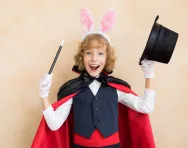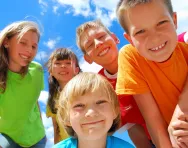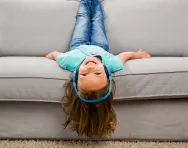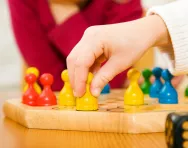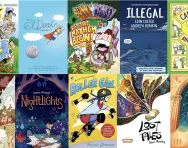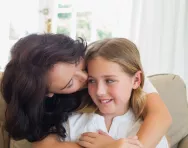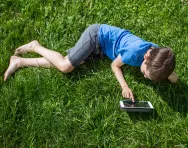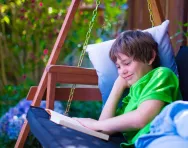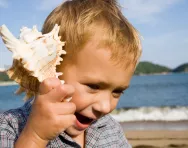Important update from TheSchoolRun
For the past 13 years, TheSchoolRun has been run by a small team of mums working from home, dedicated to providing quality educational resources to primary school parents. Unfortunately, rising supplier costs and falling revenue have made it impossible for us to continue operating, and we’ve had to make the difficult decision to close. The good news: We’ve arranged for another educational provider to take over many of our resources. These will be hosted on a new portal, where the content will be updated and expanded to support your child’s learning.
What this means for subscribers:
- Your subscription is still active, and for now, you can keep using the website as normal — just log in with your usual details to access all our articles and resources*.
- In a few months, all resources will move to the new portal. You’ll continue to have access there until your subscription ends. We’ll send you full details nearer the time.
- As a thank you for your support, we’ll also be sending you 16 primary school eBooks (worth £108.84) to download and keep.
A few changes to be aware of:
- The Learning Journey weekly email has ended, but your child’s plan will still be updated on your dashboard each Monday. Just log in to see the recommended worksheets.
- The 11+ weekly emails have now ended. We sent you all the remaining emails in the series at the end of March — please check your inbox (and spam folder) if you haven’t seen them. You can also follow the full programme here: 11+ Learning Journey.
If you have any questions, please contact us at [email protected]. Thank you for being part of our journey it’s been a privilege to support your family’s learning.
*If you need to reset your password, it will still work as usual. Please check your spam folder if the reset email doesn’t appear in your inbox.
How humour helps children learn
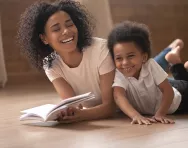
From first gummy chuckles to terrible pre-schooler jokes to the mischievous banter between older kids, humour is an important part of every child’s life – even in the classroom.
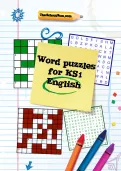
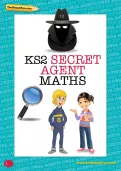
Claim four puzzle packs!
- Word Puzzle Packs
- Numeracy Puzzle Packs
- Challenging and exciting | Boost key skills
Laughter and learning might, at face value, seem incompatible; many of us will have our own stories of being told off for giggling in class. But an injection of humour into school life can lighten the atmosphere, forge relationships between pupils and their teacher, and give learning a boost.
Why humour matters to children
We all know that waking up in a good mood sets us up for the day ahead, and it’s no different for children.
‘Laughter and humour produce a rush of feel-good hormones, which gives children a whoosh of happiness,’ explains Andy Cope, teacher, author and 'happiness expert'.
‘It diffuses stress, and creates space for them to come up with solutions, rather than ruminating on problems.
This is particularly relevant in the current climate, where more and more children are struggling with anxiety and worry.
Research shows that humour has a vast range of benefits for children, including:
- Boosting creativity and critical thinking skills
- Promoting values, morals and social responsibility
- Building trust and confidence
- Helping them cope with disappointment, sadness and grief
- Developing and maintaining good relationships
‘Being happy opens up future possibilities, so your child is more willing to give things a go,’ says Andy. ‘It also helps them view the past in a more positive light, and see that things they failed at weren’t so bad after all.’
Children’s sense of humour evolves as they get older, but becomes no less important. ‘As we grow, we experiment, work out what makes us chuckle, and seek out more of it,’ Andy says.
‘Initially, there’s little sophistication to children’s sense of humour. Their brains are unable to grasp nuances, irony or satire, hence a political Trump joke won’t cut any ice, but a “bottom trump” joke is the funniest thing ever.’
Writer, broadcaster and presenter Gyles Brandreth, author of What's Black & White & Red All Over? and known as 'the joke bloke', agrees that humour and jokes are important for children of all ages.
‘Sharing jokes is a great way of breaking down barriers between adults and children, and increases their sense of community,’ he explains. ‘It’s a great way of learning empathy and having fun – a life without laughter isn’t a life worth living.’
How humour helps your child learn
These words show how humour is a serious business, and can have a big impact not just on children’s wellbeing, but also their learning.
‘A happy brain is more creative, so children can see possibilities and solutions that they can’t see when they’re in a low mood,’ Andy explains.
‘Children learn through play, so “having fun” is an essential component of learning.’
According to American professor Claudia E Cornett, humour enhances children’s learning in many ways, including:
- Attracting attention and provoking thought – for example, if someone starts a Knock Knock joke, the other person instinctively wants to know who’s there.
- Improving creativity, and encouraging playful frames of mind that help them solve problems in a creative way.
- Helping them gain friends.
- Improving communication, helping them become not just good speakers but also good listeners.
- Helping them deal with difficult moments.
- Motivating and energising them.
Humour also teaches children that it’s okay to try and fail. If, for instance, their teacher makes a spelling mistake on the whiteboard but is able to laugh it off when a pupil points it out, they’re showing their class that making mistakes is human, and not something to get upset or embarrassed about.
This promotes a ‘growth mindset’ that encourages children to be more resilient, challenge themselves and try new things, knowing that they can laugh at themselves and move on rather than dwelling on what went wrong.
Indeed, research shows that humour in learning actually improves students’ school performance by capturing their attention, reducing anxiety, encouraging group participation, and increasing motivation.
There are specific academic benefits to humour, particularly in terms of literacy. ‘Jokes give children the chance to play with words and language, for example by discovering puns,’ says Gyles.
Funny comics and books that appeal to children’s sense of humour help them enjoy reading for pleasure, and build vocabulary and an understanding of grammar, tone of voice and audience without them even realising.
But perhaps most importantly, humour forges relationships not just between children and their peers, but also between them and their teacher, and this sets up a happy environment that’s right for learning.
‘Yes, we need teachers with subject knowledge, but more important is that they know how to connect with children,’ Andy says.
Humour in the classroom
Along with the specific learning benefits of humour, it helps to create an atmosphere in which children can achieve.
‘Humourless classrooms feel cold, with little joy, whereas a happy classroom is a wondrous place: there’s a buzz and warmth, and children aren’t afraid to put their hands up,' says Andy. 'They’re working at their best because they want their teacher to be proud of them.’
Teachers use a variety of humorous techniques in the classroom to help children learn, such as:
- Reading funny books or poems aloud
- Rhymes, chants and riddles
- Funny anecdotes
- Classroom-based and playground games
- Jokes
- Banter (although it’s important that this isn’t at the expense of the child/ren)
They may also set children specific tasks that have humour at their core. They need to learn to write for different audiences, for example, so they may be given an activity where they write a funny story, play script or poem.
They may put on a school play that’s designed to make the audience laugh, or take part in a joke-telling competition, or learn silly rhymes to help them remember phonics rules or times tables.
Humour at home
Encouraging a positive and playful attitude starts from the moment you wake your child for school. There may seem little place for humour when you’re trying to make packed lunches, locate missing PE kit and get your child to brush their teeth, but having a laugh as you’re brushing their hair or walking them to school will get them in the right mindset for learning.
‘Rather than setting your child up to be happy at the end of the school day when their learning is finished, it’s much better to set them up to be happy at the start of the day,’ Andy explains.
‘Having a smile on their face will make them feel happy right now: it’s like rocket fuel for learning.’
It’s also important to seize everyday opportunities for humour. ‘One of the easiest ways to do this is by reading a bedtime story every night,’ says Andy.
‘Bring the story to life, so the baddy has a baddy voice and the goody has a goody voice. The funny bits are hilarious, the exciting bits are nerve-tingling, and your child is wide-eyed with laughter and fully engaged.’
Jokes, too, can bring a smile to everyone’s faces and can be great for smoothing over arguments or getting siblings interacting.
‘Jokes, riddles and silly poems are great for getting children to lift their eyes from the screen,’ says Gyles.
‘Sharing jokes – whether silly jokes, naughty jokes, bad jokes or dad jokes – helps them learn empathy and have fun, and breaks down barriers between adults and children.’
10 of Gyles Brandreth's best jokes for kids
Q: Why did the spider go to the computer?
A: To check his WEBsite.
Q: Why does a giraffe have a long neck?
A: Because its feet smell.
Q: Why can’t two elephants go swimming at the same time?
A: Because they only have one pair of TRUNKS between them.
Q: What’s it called when a dinosaur crashes its car?
A: A Tyrannosaurus WRECK.
‘Doctor, doctor, I’ve got a strawberry stuck in my ear.’
‘Don’t worry, I’ve got some CREAM for that.’
Q: Which vampire always eats junk food?
A: SNACKula.
Q: What do you call a woman with two toilets on her head?
A: Lulu.
Q: Why did Cinderella get kicked off the football team?
A: Because she kept running from the ball.
Q: Why can’t you hear a Pterodactyl when it goes to the toilet?
A: Because the PEE is silent.
Knock knock.
Who’s there?
Mikey.
Mikey who?
MIKEY doesn’t fit in the keyhole!
Taken from What’s Black & Red & White all Over? (£9.99, Puffin), which also contains Gyles’s fool-proof guide to joke-telling.

